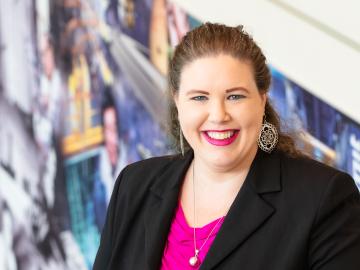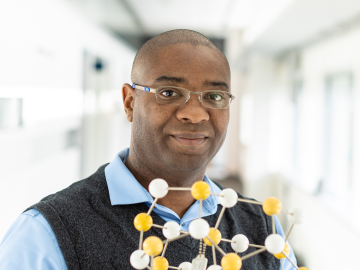
Filter News
Area of Research
- Advanced Manufacturing (2)
- Biology and Environment (10)
- Clean Energy (14)
- Electricity and Smart Grid (1)
- Fuel Cycle Science and Technology (1)
- Functional Materials for Energy (2)
- Fusion and Fission (1)
- Fusion Energy (1)
- Isotopes (4)
- Materials (41)
- Materials Characterization (2)
- Materials for Computing (2)
- Materials Under Extremes (1)
- National Security (26)
- Neutron Science (8)
- Supercomputing (13)
News Type
News Topics
- (-) Materials (74)
- (-) National Security (42)
- 3-D Printing/Advanced Manufacturing (55)
- Advanced Reactors (13)
- Artificial Intelligence (54)
- Big Data (27)
- Bioenergy (57)
- Biology (65)
- Biomedical (32)
- Biotechnology (11)
- Buildings (24)
- Chemical Sciences (35)
- Clean Water (14)
- Climate Change (56)
- Composites (10)
- Computer Science (98)
- Coronavirus (21)
- Critical Materials (3)
- Cybersecurity (20)
- Decarbonization (49)
- Education (1)
- Emergency (2)
- Energy Storage (44)
- Environment (117)
- Exascale Computing (27)
- Fossil Energy (4)
- Frontier (27)
- Fusion (38)
- Grid (26)
- High-Performance Computing (54)
- Hydropower (5)
- Irradiation (1)
- Isotopes (35)
- ITER (3)
- Machine Learning (24)
- Materials Science (65)
- Mathematics (6)
- Mercury (7)
- Microelectronics (2)
- Microscopy (28)
- Molten Salt (2)
- Nanotechnology (28)
- Net Zero (9)
- Neutron Science (59)
- Nuclear Energy (67)
- Partnerships (21)
- Physics (34)
- Polymers (13)
- Quantum Computing (22)
- Quantum Science (34)
- Renewable Energy (1)
- Security (14)
- Simulation (34)
- Software (1)
- Space Exploration (13)
- Statistics (1)
- Summit (32)
- Sustainable Energy (52)
- Transformational Challenge Reactor (4)
- Transportation (37)
Media Contacts

Having passed the midpoint of his career, physicist Mali Balasubramanian was part of a tight-knit team at a premier research facility for X-ray spectroscopy. But then another position opened, at ORNL— one that would take him in a new direction.

Rigoberto Advincula, a renowned scientist at ORNL and professor of Chemical and Biomolecular Engineering at the University of Tennessee, has won the Netzsch North American Thermal Analysis Society Fellows Award for 2023.

Anne Campbell, an R&D associate at ORNL, has been selected for an Emerging Professional award from ASTM International. ASTM, formerly the American Society for Testing and Materials, is an international standards organization that develops and publishes voluntary consensus technical standards for a wide range of materials, products, systems and services.

Valentino “Tino” Cooper, a scientist at ORNL, has been appointed to DOE’s Basic Energy Sciences Advisory Committee for a three-year term. Cooper’s research elucidates the fundamental understanding of advanced materials for next-generation energy and information technologies.

Andrew Lupini, a scientist and inventor at ORNL, has been elected Fellow of the Microscopy Society of America.

Marm Dixit, a Weinberg Distinguished Staff Fellow at ORNL has received the 2023 Rosalind Franklin Young Investigator Award.

Using disinformation to create political instability and battlefield confusion dates back millennia. However, today’s disinformation actors use social media to amplify disinformation that users knowingly or, more often, unknowingly perpetuate. Such disinformation spreads quickly, threatening public health and safety. Indeed, the COVID-19 pandemic and recent global elections have given the world a front-row seat to this form of modern warfare.

A series of new classes at Pellissippi State Community College will offer students a new career path — and a national laboratory a pipeline of workers who have the skills needed for its own rapidly growing programs.

Four nuclear nonproliferation staff members from the Department of Energy’s Oak Ridge National Laboratory were recognized as part of the 2021 Outstanding Security Team awarded by the Secretary of Energy for contributions to the Material Control and Accountability Technical Qualification Program Pilot.

Scientists have long sought to better understand the “local structure” of materials, meaning the arrangement and activities of the neighboring particles around each atom. In crystals, which are used in electronics and many other applications, most of the atoms form highly ordered lattice patterns that repeat. But not all atoms conform to the pattern.


